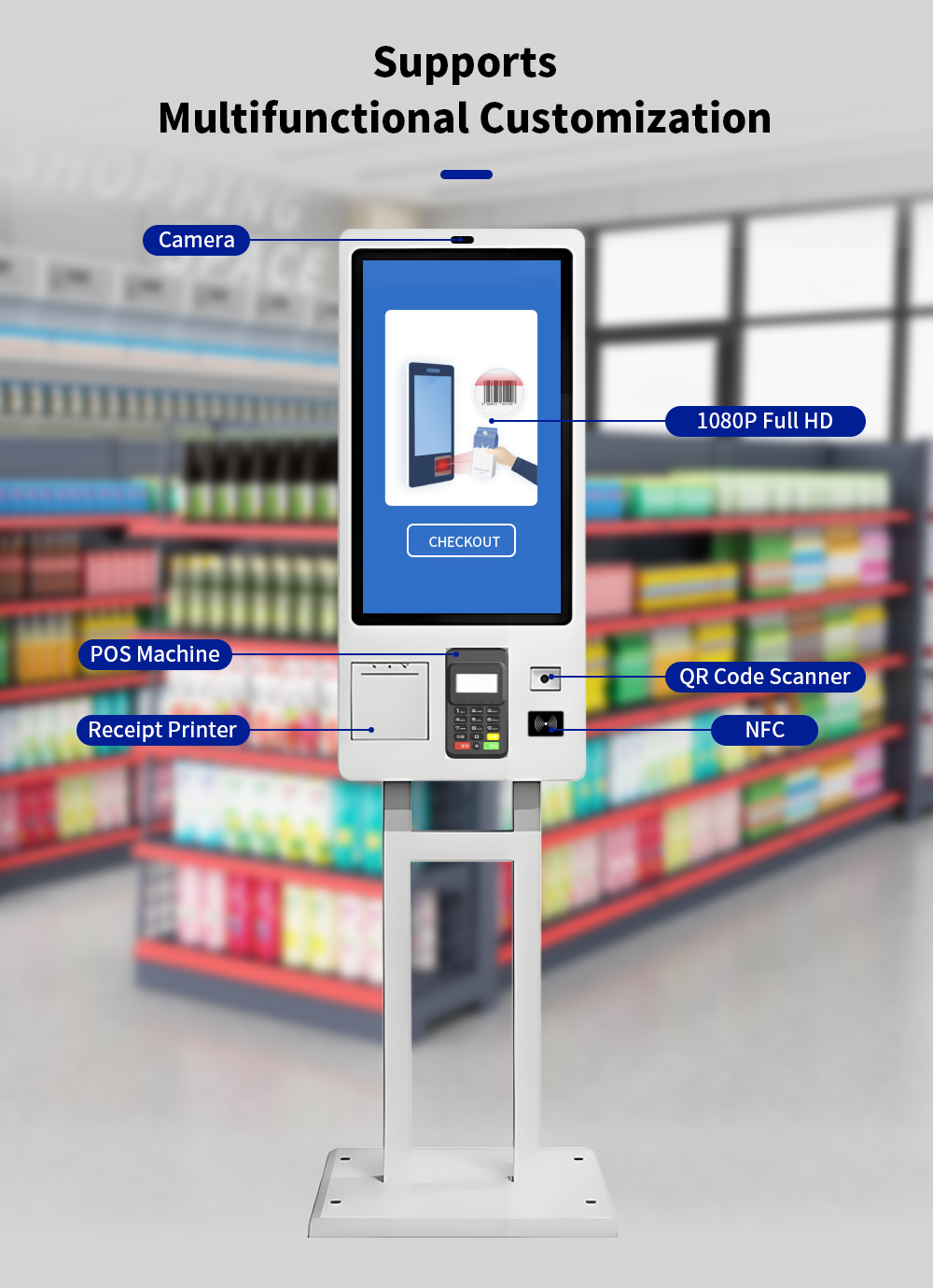The Development Prospects of Touch Screen Self-Service Kiosks 1
In recent years, Touch Screen Self-Service Kiosks have become an essential part of the retail and food service industries. With the rapid advancement of digital technologies and shifting consumer expectations, these devices are no longer seen as optional enhancements but as critical infrastructure for improving efficiency, reducing labor costs, and enhancing customer experiences. As more businesses adopt self-service solutions, the development prospects for Touch Screen Self-Service Kiosks appear bright and promising, with opportunities for continuous growth, innovation, and market expansion.
Rising Demand Driven by Consumer Behavior
Modern consumers increasingly value convenience, speed, and control over their shopping or dining experiences. Traditional checkout counters often involve waiting in long lines, limited cashier availability, and potential human errors. In contrast, Touch Screen Self-Service Kiosks allow customers to scan, select, and pay for products independently, reducing reliance on staff and minimizing waiting times. This trend is particularly evident in supermarkets, fast-food chains, convenience stores, and airports.
Younger generations, especially millennials and Gen Z, show a strong preference for digital interactions. They are familiar with touch interfaces and mobile technologies, making kiosks a natural fit. As more customers embrace these solutions, businesses are motivated to expand kiosk deployments. This strong consumer demand ensures a sustainable growth trajectory for the industry.
Cost Efficiency and Business Benefits
From a business perspective, Touch Screen Self-Service Kiosks provide significant operational benefits. One of the most obvious advantages is labor cost reduction. Retailers and restaurants often face challenges such as staff shortages, rising wages, and high turnover rates. By integrating kiosks, companies can optimize staffing by reallocating employees to other value-added tasks, such as customer support, inventory management, or personalized services, rather than routine checkout processes.
Furthermore, kiosks increase accuracy in transactions. Unlike human cashiers, kiosks eliminate the risk of miscommunication during ordering or pricing errors during scanning. This leads to smoother operations and greater customer satisfaction. Additionally, kiosks can promote upselling opportunities by suggesting complementary products, meal upgrades, or special promotions, which can increase average order values and boost profitability.
Technological Advancements Enhancing the Kiosk Experience
The future development of Touch Screen Self-Service Kiosks will be closely tied to advancements in technology. Improvements in hardware, such as high-resolution displays, faster processors, and more durable touch panels, are already enhancing user experiences. At the same time, integration with artificial intelligence (AI) and machine learning will allow kiosks to deliver personalized recommendations based on customer purchase history and preferences.
Moreover, the combination of kiosks with mobile payment systems, digital wallets, and contactless solutions is becoming increasingly important. The COVID-19 pandemic accelerated the adoption of contactless technologies, and kiosks that support QR code scanning, NFC payments, and facial recognition will continue to gain traction. Biometric authentication, voice recognition, and even augmented reality (AR) could further transform the way consumers interact with kiosks in the near future.


